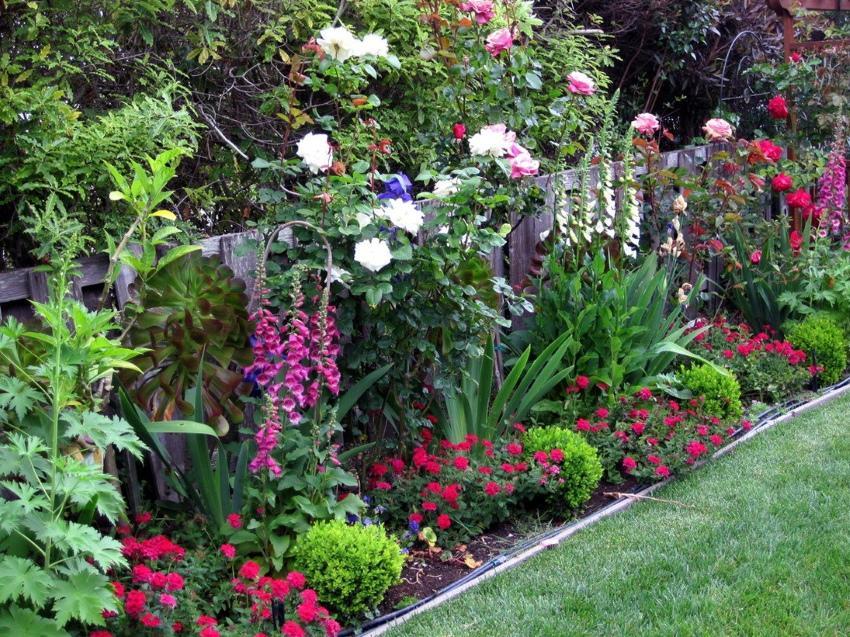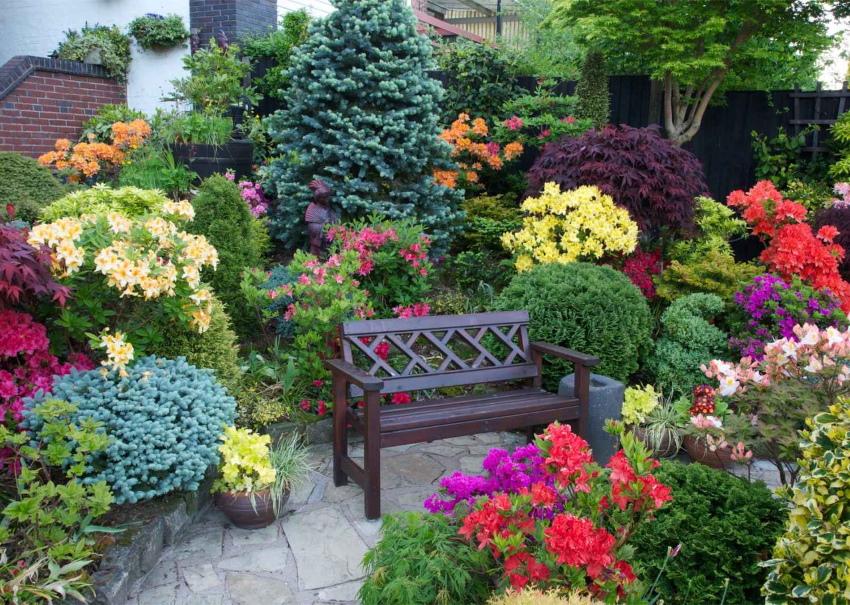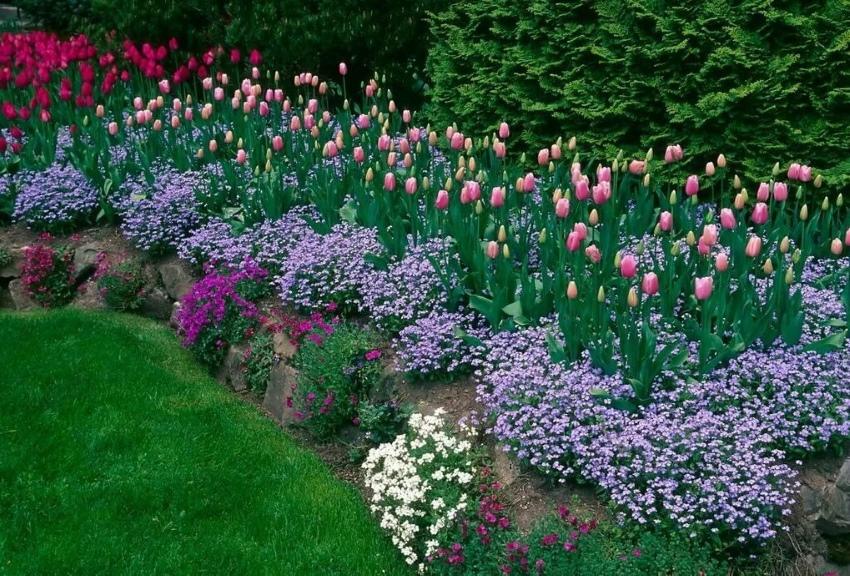How to combine plants in the garden - simple but important truths for a summer resident
 Most of us fill our flower beds and front gardens, focusing mainly on our own wishes. Of course, a lot depends on this, because flowers should be pleasing to the eye. However, do not forget and first study one more nuance - how to combine plants in the garden. Indeed, among them there are both vigorous tall cultures that suppress their more "gentle" neighbors, and very tiny, but charming flowers. Such different plants should be planted so that everyone has enough space and lighting. In addition, each flower has its own requirements, which is also important.
Most of us fill our flower beds and front gardens, focusing mainly on our own wishes. Of course, a lot depends on this, because flowers should be pleasing to the eye. However, do not forget and first study one more nuance - how to combine plants in the garden. Indeed, among them there are both vigorous tall cultures that suppress their more "gentle" neighbors, and very tiny, but charming flowers. Such different plants should be planted so that everyone has enough space and lighting. In addition, each flower has its own requirements, which is also important.
How to combine plants in the garden - general rules

What else matters for a successful neighborhood? There are many nuances here, for example:
- Plant height and characteristics of the root system. Large green pets should have enough space and not shade others. And bushes with highly developed, and especially, creeping rhizomes are best placed separately.
- Flowering time. You can create a flower bed that blooms continuously by picking up plants that bloom one after another.
- Coloring. It can be a variegated front garden or sustained in one direction, for example, in gentle colors. Or he will focus only on the spring and summer colors, admiring the greenery the rest of the time.
- Individual properties of plants. Many crops are capable of repelling insect pests. This allows them to be used for joint plantings.
The location of the plantings also plays a role, because the flower beds can be vertical, lateral, multi-tiered. It is especially important to study the characteristics of each flower, how quickly and strongly it grows.
What is best combined with what - a few examples
 It is simply unrealistic to list all the flowers, so let's talk about the most common plants in the garden. Roses will look bright against the foreground of the conifers. Between them, you can plant the same bright and large crops (phlox, delphiniums) or gentle and discreet (decorative cereals, gypsophila). Climbing roses "make friends" with climbing grapes, the more they can be covered together and treated equally from diseases and pests.
It is simply unrealistic to list all the flowers, so let's talk about the most common plants in the garden. Roses will look bright against the foreground of the conifers. Between them, you can plant the same bright and large crops (phlox, delphiniums) or gentle and discreet (decorative cereals, gypsophila). Climbing roses "make friends" with climbing grapes, the more they can be covered together and treated equally from diseases and pests.
Peonies should be planted on the upper tier, they prefer solitude. But the annuals blooming in front of them will draw attention to themselves after the end of the flowering of the peonies themselves. From ornamental crops, the hosta growing nearby looks beautiful, especially variegated varieties.
Tulips and other representatives of the bulbous family combine with each other and create a bright spring flower bed. They can also be planted in front of or between plants that bloom in summer or autumn (gladioli, chrysanthemums, marigolds).
Irises Will "fit" into almost any front garden, with the exception of the rose garden, where they will become visual competitors to the queen of the garden. But the beauties - lilies, like peonies, prefer to solo in plantings, but they look good next to the hosts. And chrysanthemums can be considered the most unpretentious in relation to neighbors. They get along well with any flowers, although the flower bed is made of only chrysanthemums, but of different colors, looks gorgeous.